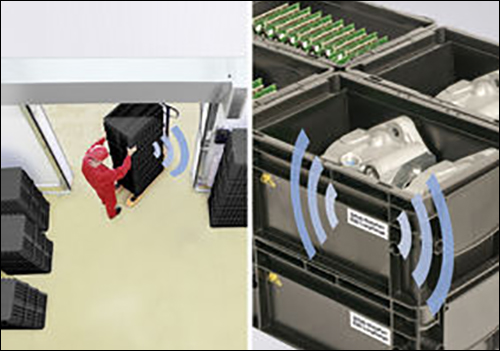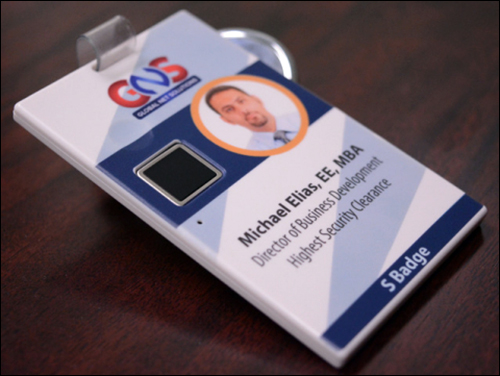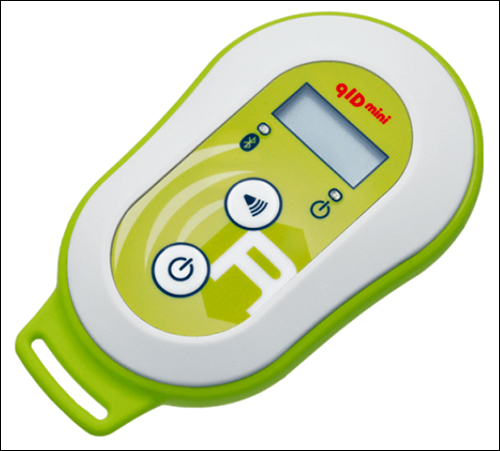The following are news announcements made during the past week by the following organizations:
Bergen Airport, BLIP Systems; the
RAIN RFID Alliance;
Schreiner ProTech;
CEVA, Ellisys;
Global Net Solutions; Runtime; and
CAEN RFID.
Bergen Airport to Leverage BLIP Systems’ Technology to Reduce Wait Times
Bergen Airport (Avinor), Norway’s second busiest airport, which serves more than six million passengers annually, has adopted BLIP Systems‘ BlipTrack queue-management solution to measure and predict how many people stand in line and for how long. The detailed, minute-by-minute measurements and prediction insights provided, according to the airport, will help it to better comply with service-level agreements and minimize queue build-up, in order to improve passengers’ airport experience.
“We want to make travelling easier for our passengers,” said Øystein Skaar, Bergen Airport’s director, in a prepared statement. “The implementation of BlipTrack will help to ensure that passengers experience a quick and easy passage through this stage of the journey, and significantly increase the opportunity for a positive experience throughout the airport.”

The airport recently opened a new terminal with the capacity for serving up to 10 million passengers a year. The BlipTrack system will provide the airport with both live and empirical data insights into passenger queue and dwell times. It will enable the airport to monitor queue line density at the security checkpoint, allowing management to respond promptly and effectively to irregular operations and disruptions—for example, by opening additional lines. In addition, the airport plans to share that wait-time information with passengers, which will reduce stress levels associated with queuing by creating realistic expectations.
“With the new installation at Bergen Airport, BlipTrack has proven to be an effective platform to provide visibility on resource effectiveness for greater processing efficiency and improved passenger experience,” said Preben Andersen, BLIP Systems’ sales manager, in the prepared statement. “We look forward to continuing to be part of Avinor’s ongoing plan in having Europe’s most progressive and service-minded airports.”
The solution at Bergen will consist of Wi-Fi device-detecting sensors, which will be placed around the security process. By identifying the devices as they pass multiple sensors, the airport will be able to ensure that specific and accurate statistical information, such as queue times, dwell times and movement patterns, will become available, without requiring active interaction from passengers.
RAIN RFID Alliance Announces Retail Brands Worldwide Adopting RFID
The RAIN RFID Alliance has announced that passive ultrahigh-frequency (UHF) RFID technology based on the GS1 and ISO standards has been adopted by many of the world’s leading retailers to improve inventory management. More than 100 retailers and brands have publicly acknowledged their adoption of the technology, the Alliance reports, including 7-Eleven, Zara, Burberry, C&A, Decathlon, H&M, La Chapelle, lululemon, Macy’s, Marks & Spencer, Target and TESCO.
According to the RAIN RFID Alliance, data presented at RFID Journal’s recent RFID in Retail and Apparel 2017 conference and exhibition demonstrates that adoption of RFID technology has accelerated throughout the retail apparel industry, both in-store and in the supply chain. Recent market research indicates that some 8.5 billion passive RFID tags will be used on apparel items in 2018.
“Successful RAIN RFID implementations increase visibility across supply chains globally, helping industry to keep pace with changing consumer and trading partner needs. This ensures that the right product is in the right place at the right time, regardless of the path to purchase,” said Robert Beideman, GS1’s senior VP of solutions and innovation, in a prepared statement. “Together with the RAIN RFID Alliance, GS1 is driving adoption and working to ensure relevance of the technology to solving important business challenges, today and tomorrow.”
“The complex nature of retail inventory management, and the necessity of today’s omnichannel retail approach, means that retailers are perfectly positioned to leverage the full benefit of RAIN RFID technology,” said Steve Halliday, the RAIN RFID Alliance’s president, in the prepared statement. “The retailers who are deploying RAIN RFID realize that they can see significant improvements in sales and profit margins, thanks to inventory accuracy up to 98 percent and 50 percent reduction in out-of-stocks.”
Schreiner ProTech Intros RFID Label for Container Management
Schreiner ProTech will present its ((rfid))-DistaFerr ESD LongRange label for container marking at LogiMAT 2018, to be held in Stuttgart on Mar. 13 to 15. The company recently added the new label to its RFID label family for ESD materials.
In conventional mass-production operations, the parts to be processed typically arrive at the respective assembly stations in containers via a kanban system with bar-code expansion card functionality—a complex and error-prone logistics system. By contrast, the company reports, containers equipped with RFID labels enable bulk data acquisition, offer end-to-end batch or lot tracking and make optimized empties management possible due to real-time inventory information.

The ((rfid))-DistaFerr ESD LongRange label, designed for use on ESD containers of all types and antistatic levels, delivers a read range of approximately 7 meters (23 feet). It meets the recommendation of the German Association of the Automotive Industry (VDA) for ESD container marking, the company reports.
Another new product in the portfolio is a hybrid label that combines Near Field Communication (NFC) technology with ultrahigh-frequency (UHF) RFID technology. The label enables long-range reading in manufacturing and logistics, according to the company, as well as smartphone-based reading at customer sites. LogiMAT’s attendees will have the opportunity to learn how RFID labels can be dispensed, by watching the operation of a label applicator at Schreiner ProTech’s booth.
During a technical presentation to be held at the LogiMAT Forum, RFID expert Frank Linti will describe the challenges that Industry 4.0 poses to logistics and production, and what a supply chain networked and optimized down to the manufacturing cell by means of the Internet of Things (IoT) can look like.
CEVA’s Bluetooth 5 Low Energy IP Certified With Ellisys’ Bluetooth Compliance Tester
CEVA, a licensor of signal-processing IP for smart, connected devices, has announced that it has completed qualification testing of its Bluetooth 5 Low Energy (BLE) IP, including all new optional Bluetooth 5 features using Ellisys‘ Bluetooth Qualifier (EBQ) Compliance Tester.
“The Ellisys EBQ Bluetooth radio controller compliance tester is a major step forward in formally ensuring product compliance and interoperability when considering the more advanced Bluetooth 5 low energy features, including long range, 2Mbps data rate and Advertising Extensions,” said Aviv Malinovitch, the VP and general manager of CEVA’s Connectivity Business Unit, in a prepared statement.
“We are delighted with the industry’s reception of our EBQ Bluetooth radio controller compliance tester,” said Mario Pasquali, Ellisys’s president and CEO, in the prepared statement. “By testing with feature-rich implementations such as CEVA’s Bluetooth 5 IP we are able to ensure that the tester is robust and accurate. We look forward to continued cooperation with CEVA as new Bluetooth features evolve.”
CEVA’s RivieraWaves Bluetooth IP platforms provide comprehensive solutions for both BLE and Bluetooth dual-mode connectivity. Each platform consists of a hardware baseband controller, as well as a feature-rich software protocol stack. A flexible radio interface allows the platforms to be deployed with either RivieraWaves RF or various partners’ RF IP, enabling optimal selection of foundry and process node.
Global Net Solutions Offers IoT Badge-Based Security System
Global Net Solutions (GNS), a provider of facilities-based smart security and business intelligence solutions, has unveiled its S-Badge, an IoT-based security solution designed to improve safety and tackle insider threats and breaches in high-security environments. This includes airports, hospitals, school districts, college campuses and government agencies.
The S-Badge solution leverages a multi-sensor Bluetooth Low Energy (BLE) beacon, multiple data sensors and high-frequency (HF) RFID technology to track individuals, property and assets with location monitoring in indoor and outdoor settings. Each badge is individually customized with a printed photo ID on a scratch-proof and water-resistant beveled surface.

The S-Badge leverages IoT technology, artificial intelligence (AI) and machine learning. The proprietary solution utilizes a system of onsite LoRa gateways, as well as an authentication badge that verifies a user’s identity based on location, a biometric signature and a preprogrammed NFC chip. The badge also features a panic button to discreetly signal an emergency, along with the badge’s location.
“We’re living in a time when security and privacy have never been more important, yet no company is tracking people once they’re in the door,” said Michael Elias, GNS’s director of business development, in a prepared statement. “Existing systems let the fox in the hen house, so we developed the S-Badge. Now you can be 100% sure of who is accessing what, where and when, without risk of security breaches from negligence, oversights or abuse. Most importantly, we only track individuals when they are within the campus or facility, not at home or off duty.”
The S-Badge’s three-factor authentication process provides high security, the company reports, while solving problems that plague existing systems, such as badge abuse and lost or stolen badges. This process includes biometric authentication (the S-Badge must be activated using advanced fingerprint verification, which also measures moisture, temperature and electricity in the live skin to ensure that only the authorized individual can activate the badge), location authentication (the S-Badge communicates with surrounding gateways to verify its authenticity and exact location at any time) and secure element authentication (an individually programmed NFC chip verifies whether the user is authorized to access a specific area or assets).
The badge utilizes AI and machine learning to create a prediction model that can help to identify threats in real time, based on past behavior and location data. When the prediction model recognizes unusual behavior, such as someone spending too much time in a restricted area, the system can send an alert to security personnel to notify them of a potential problem.
“Existing systems and standards are riddled with flaws—they’re simply outdated. Also, there is a gold mine of data that, up until now, has been completely ignored,” Elias said in the prepared statement. “What we came up with is the first complete system designed to work in any environment—it’s scalable, easy to use and can be deployed immediately.”
Furthermore, the S-Badge features a LoRa transceiver module (a low-power, long-range radio for communication with gateways located up to five miles away), a panic button (users can discreetly signal an emergency along the badge’s exact current location), a flexible infrastructure (a cloud-based or on-premises server infrastructure giving customers complete control, liability and security of their own data) and wireless charging (a capability via an NFC wireless charging pad).
Runtime Announces Commercial Support for Thread
Runtime, an Internet of Thigns (IoT) platform-as-a-service and open-source solution provider, has announced commercial support for Thread, a mesh-networking protocol that securely connects devices in residential and commercial settings via a low-power IPv6 network. Runtime’s first supported implementation pairs OpenThread, an open-source implementation maintained by Nest, with Apache Mynewt, an open-source operating system for connected, constrained devices in the Apache Software Foundation (ASF).
Apache Mynewt’s first Thread implementation is based on Nordic Semiconductor‘s nRF52840 system-on-chip, which supports the operation of both Thread and Bluetooth Low Energy (BLE) stacks. Apache Mynewt supports Bluetooth 5, Bluetooth Mesh, LoRaWAN and Wi-Fi.
“As multi-protocol chipsets become increasingly common, the requirement for advanced scheduling and a truly manageable OS in the MCU space is evident,” said James Pace, Runtime’s CEO, in a prepared statement. “Apache Mynewt was designed with low power connectivity, security, and at-scale manageability, and is an ideal platform for building Thread-enabled devices and applications. The Runtime team has real-world experience securely deploying and managing the largest mesh networks in the world, having conceived and standardized IEEE 802.15.4g.”
“The Thread Group is pleased to see companies such as Runtime focus commercial support offerings around the Thread specification and the Thread community,” said Grant Erickson, Thread Group’s president, in the prepared statement. “With Thread, product developers and end users can easily and securely connect devices into a low-power wireless network that includes direct Internet and cloud access.”
“We are elated that Runtime chose the Nordic nRF52840 multi-protocol SoC as the first platform to support in Apache Mynewt for developers building OpenThread applications,” stated Nordic Semiconductor’s Pär Håkansson, in the prepared statement. “At Nordic, we believe the openness of the nRF5 series of SoCs is the natural complement to open source efforts. Apache Mynewt’s strong support for the Nordic platform makes it one of the most compelling projects to use with the Nordic’s nRF5 series connectivity SoCs.”
CAEN RFID Releases Bluetooth UHF RFID Key Fob Reader
Italian company CAEN RFID has announced its latest RFID reader for hazardous areas and harsh industrial environments. The device is streamlined and lightweight, the company reports, with a long battery life.
The qIDmini (model R1170I) is a RAIN RFID handheld reader in the company’s easy2read product family, and is compliant with the ISO 18000-6C and EPC Gen 2 standards. It has an integrated antenna suited for short- to medium-range applications. A Bluetooth communication interface makes it a suitable UHF RFID add-on for a Bluetooth-enabled host, the company reports, such as a PC, a smartphone, a PDA or a tablet.

The reader is compatible with the Microsoft Windows XP/7 and Windows CE/Mobile, Android, and Apple iPhone and iPad operating systems. An HID version supports native keyboard emulation, allowing it to interact directly with legacy applications, office automation software or other generic solutions requiring manual input.
The qIDminiNF version is specifically designed to optimize reading performance, with near-field miniaturized tags like Murata’s Magicstrap and Hitachi’s USPT. The near-field antenna of the qIDminiNF reader enables users to interrogate such small tags, even when they are embedded in small parts, such as watches, jewels or mechanic parts. The reader can operate in batch mode, allowing it to store Electronic Product Codes (EPCs) into its internal memory when the communication links (USB or Bluetooth) are unavailable.
When paired to a smartphone or a tablet, the qIDmini provides a cost-effective alternative to more expensive handheld devices, according to the company. Designed for mobile operators in indoor or outdoor areas, the qIDmini is suitable for in-store inventory-management, field sales mobility, service and maintenance applications.

